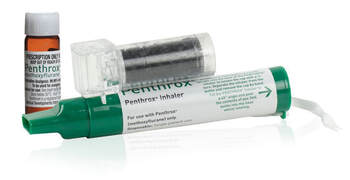|
Pain its assessment and Treatment Many medical problems found in remote medicine have an element of pain attached to them weather through injury or a medial cause such as dental, abdominal and chest pain. Therefore, an understanding of the assessment and treatment of pain is essential When assessing a patient and taking a history, always ask open questions or seek clarification rather than use closed questioning technique. It is well documented that when asking closed questions patients often agree with you even if they are not experiencing what you ask them about. This is because patients often feel that the questioner knows more about the condition than they do and if asked if they suffer a symptom feel they should have it so agree to please the questioner. It is better to ask, “What sort of pain is it” rather than “Is it a crushing pain”. After you have finished asking questions summarise the information and ask if your impression is correct and do, they wish to change or expand on anything. Some patients are very verbose in response to open questioning, so on occasions a mixture may need to be used. If the patient has pain, then this can be assessed using either the OPQRSTA or SOCRATES aide memoires . OPQRSTA (O)nset When did the pain start, what were you doing or had been doing before it started? (P) Provoke, Palliate or Prevent Does anything bring the pain on (Provoke), lessen (Palliate) or prevent it? Pain that is more intense when taking a deep breath is more likely to be caused by problem with the lungs or the muscles between the ribs (Intercostals). But a patient with a constant central chest pain is more likely to have a heart problem. (Q)uality What is the pain like is it sharp, dull, crushing, or tight? Be cautious with this as the patient’s idea of what the pain feels like may not fit with a textbook answer. A person may describe both the discomfort caused by a heart attack and asthma as a heavy pain. But others could separately describe them as crushing and tight. (R)adiation / (R)epeat Does the pain go anywhere else, both chest and abdominal pain can often spread through to the back, arms, neck, and shoulders? In the case of shortness of breath, the ‘R’ for Radiation becomes Repeat i.e. has this happened before and what was the outcome. (S)everity How bad is the pain, is it at a constant level or does it come and go? A good measure is to use a Pain score, ask the patient to set a number against the pain “where zero is no pain and ten is the worst pain they have experienced” again this can be subjective but is a good measure to see if treatment is effective. Score the pain at the beginning and after each intervention that could relieve it. (T)ime How long and how frequent is the pain. (A)ssociated Symptoms Such as nausea or a feeling of doom felt by people having a heart attack. SOCRATES (S)ite Where is the Pain (O)nset When did the pain start, what were you doing or had been doing before it started? (C)haracter What is the pain like is it sharp, dull, crushing, or tight? Be cautious with this as the patient’s idea of what the pain feels like may not fit with a textbook answer. A person may describe both the discomfort caused by a heart attack and asthma as a heavy pain. But others could separately describe them as crushing and tight. (R)adiation Does the pain go anywhere else, both chest and abdominal pain can often spread through to the back, arms, neck and shoulders? In the case of shortness of breath, the ‘R’ for Radiation becomes Repeat i.e. has this happened before and what was the outcome. (A)ssociated Symptoms Such as nausea or a feeling of doom felt by people having a heart attack. (T)ime, How long and how frequent is the pain. (E)xacerbating/relieving factors Does anything bring the pain on (Exacerbating), lessen (relieving) or prevent it? Pain that is more intense when taking a deep breath is more likely to be caused by problem with the lungs or the muscles between the ribs (Intercostals). But a patient with a constant central chest pain is more likely to have a heart problem. (S)everity How bad is the pain, is it at a constant level or does it come and go? A good measure is to use a Pain score, ask the patient to set a number against the pain “where zero is no pain and ten is the worst pain they have experienced” again this can be subjective but is a good measure to see if treatment is effective. Score the pain at the beginning and after each intervention that could relieve it. It’s beyond the scope of this article to discuss all the injuries and problems that can cause pain but some will be covered in future posts. Local anaesthetic Local anaesthetic has many uses in the wilderness setting as it allows the practitioner to deaden an area of the patient’s body which allows painful procedures to be carried out more comfortably. It has advantages over general anaesthetic as the patient does not need to be paralysed or sedated. This will be discussed in a future post Oral. Inhaled and injected Medication The following pain-relieving medication is cover on our Expedition Medicine Courses and is available post course for bulk purchase for remote foreign travel. ASPIRIN SOLUBLE 300MG TABS IBUPROFEN 400MG TABS PARACETAMOL 500MG TABS TETRACAINE 1% DROPS POM for treatment of Eyes CO-CODAMOL 500MG/30MG TABS POM NAPROXEN 500MG TABS POM PENTHROX POM TRAMADOL 50MG CAPS (POM & Schedule 3 CD) TRAMADOL 100MG INJ (POM & Schedule 3 CD) LIDOCAINE 1% 5ML AMPS POM See our Expedition Medicine Courses for further details
3 Comments
Archit Mehta
8/19/2023 19:51:07
Thank you for providing such an informative and well-researched blog post. Your expertise on the subject matter was evident, and I enjoyed learning from your perspective. To delve deeper into this subject, <a href="https://www.digistore24.com/redir/497331/ArchitMehta/" target="_blank">click here</a>.
Reply
John
2/15/2024 13:49:40
Your blog post was thought-provoking and insightful. I enjoyed the way you explored the topic from different angles and presented a well-rounded perspective. To delve deeper into this topic, <a href="https://hop.clickbank.net/?affiliate=Rajindek0&vendor=nthrv&r=magnesium&tid=Medium%20" target="_blank">click here</a>.
Reply
Leave a Reply. |
AuthorThe author is a Registered Nurse who served with the RAMC, a Paramedic and Clinical Tutor with additional qualifications in Trauma and Remote Medicine. He has had a long term interest in remote medicine and is the Medical Advisor for several groups and runs courses in Outdoor First Aid, Expedition, Remote and Survival Medicine. ArchivesCategories |
- Home
- Upcoming Courses
-
All Courses
- Outdoor First Aid
- Advanced Outdoor First Aid
- Paediatric First Aid Course
- Emergency First Aid at Work (EFAW+F) forestry
- ITC Level 3 Award in Outdoor First Aid
- Immediate Life Support (ILS)
- Expedition Medic
- Remote medical emergencies
- Award in Education and training
- First Person On Scene/Responder Courses
- CPR/BLS For Healthcare professionals
- Pet First Aid
- Mental Health in the Workplace
- Advanced First Aid Courses
- Standard First Aid Courses
- Short First Aid Courses
- Forestry and Outdoor First Aid
- Health and Safety Courses
- Introduction to Infection Control
- Online Dog and Pet Care Courses
- Contact
- Gallery
- Activities
- Products
- Resources
- Online Courses
- Recommended Reading
- Survival Medic Blog
- QUZZES
- Tactical Medical Equipment
- Expedtion Medic Refreshers
- Minor Injury Online
- Expedition Medic Weekend
Location |
|

 RSS Feed
RSS Feed

